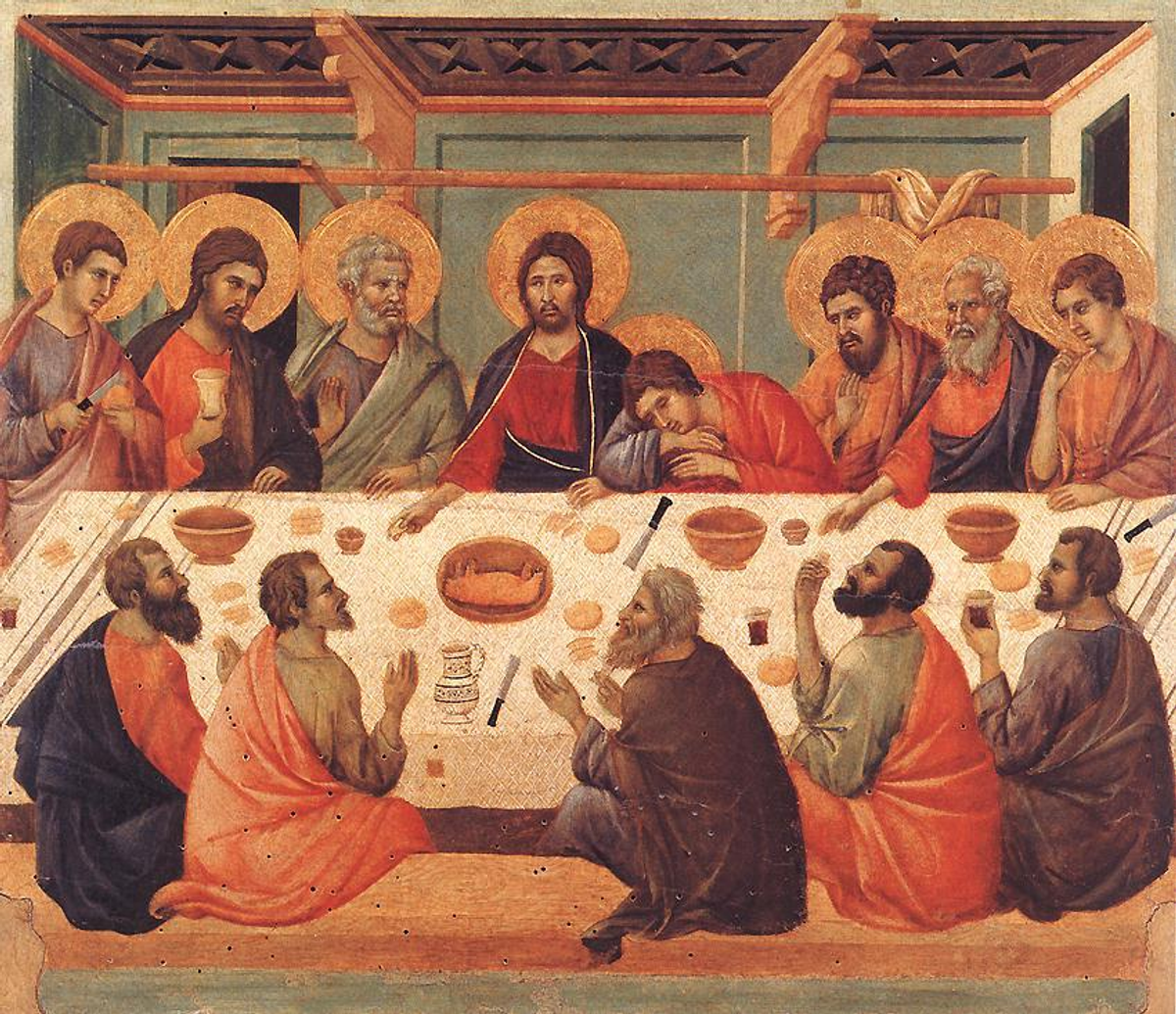RELIGIOUS
EDUCATION
NEWS

RELIGIOUS
EDUCATION
NEWS


“This is my body that is for you. Do this in remembrance of me.” 1 Cor. 11:2
Holy Week is the most solemn and glorious week in the liturgical year. It's more sacred than Christmas! This is because Holy Week commemorates the final week of Our Lord's life, the very purpose for which Christmas happened.
Holy Week begins with Palm Sunday (when Jesus made his final entrance into Jerusalem) and culminates with Easter Sunday.
Sundown on Holy Thursday to sundown on Easter Sunday is considered the most solemn part of the liturgical year. This three-day period is referred to as the Easter Triduum, also known as the Sacred Triduum, or Paschal Triduum.
The word "triduum" comes from the Latin word triduum, which comes from tris (“three”) + dies (“day”).
Here is a breakdown of the three days that make up the Easter Triduum.
Holy Thursday
On Holy Thursday evening, we begin the Triduum with the commemoration of the Last Supper. We hear the Lord say for the first time, “This is my body that is for you.” We hear Him point to the gift of the Holy Eucharist as His gift to us, given for our holiness and fulfillment. It’s a gift we will never be able to fathom or comprehend. It’s the gift of His complete self-giving and sacrificial love.
On that first Holy Thursday, Jesus also offered an example of the perfect humility and service that we are called to imitate as we become one with Him. He washed the feet of His Apostles so as to teach them and us that His Body and Blood are given so as to enable us to love as He loved. The Eucharist transforms us into true servants who are called to humility. We are called to humble service of others. This service will take on various forms but it is what we are called to.
Do you serve those around you? Do you humble yourself before others to care for their most basic needs? Do you show them you love them by your actions? This is at the heart of Holy Thursday. Humble service is a beautiful expression of our own intimate union with the Son of God.
As we celebrate Holy Thursday, we are all challenged to ponder our humility and to commit ourselves to a radical and total gift of self to others.
Good Friday
Good Friday is a day of fasting and abstinence. This is the day of the crucifixion, the day Jesus died for the sins of the world.
The parish altar looks very different on Good Friday: it is plain and bare. There is no consecrated Host in the tabernacle at the main altar of the church; it was carried away on Holy Thursday night to the "altar of repose" to signify Jesus' death. The candle by the tabernacle is blown out, and the tabernacle doors are left open to show that it is empty. Jesus is gone. This is quite dramatic, reminding us that Good Friday is a solemn day of mourning and prayer.
The ceremony on Good Friday is not a Mass—it is a communion service using the consecrated hosts from Holy Thursday. Good Friday is the only day of the year on which no Masses are offered.
Good Friday services often take place at 3 p.m., the hour that Jesus breathed his last on the cross. Veneration of the Cross usually takes place at this service, in which the priest and the faithful kneel before a cross and kiss it.
Holy Saturday
On this day Christ is in the tomb.
There is no daytime Mass on Holy Saturday. It is still a day of fasting and sorrow before the Easter Vigil begins that evening. We recall, with Mary and the disciples, that Jesus died and was separated from them for the first time as He lay in the tomb. The faithful often continue their Good Friday fast through Holy Saturday.
A vigil Mass is held after nightfall on Holy Saturday, or before dawn on Easter Sunday, in celebration of the resurrection of Jesus. This is called the Easter Vigil: the most glorious, beautiful, and dramatic liturgy for the Church.
The vigil is divided into four parts and can last up to three hours:
1) the Service of Light,
2) the Liturgy of the Word,
3) the Liturgy of Baptism,
and 4) the Liturgy of the Eucharist.
Easter Sunday is what we've all been waiting for! The forty days of prayer, fasting, and almsgiving during Lent was in preparation for this day, when our hearts and souls can drink in deeply the culmination of the Paschal mystery: the Resurrection.
Vicky Pejic
Religious Education